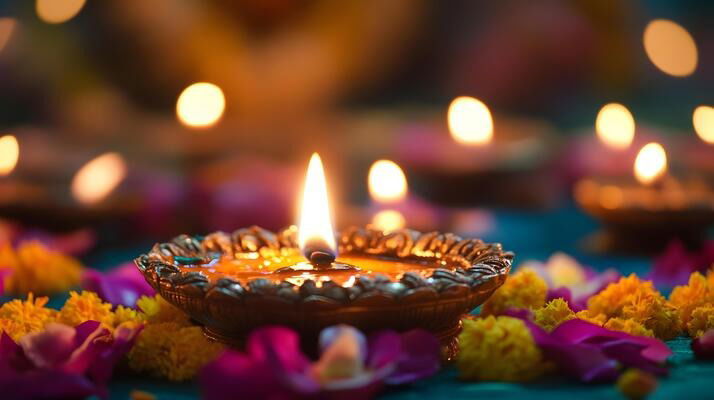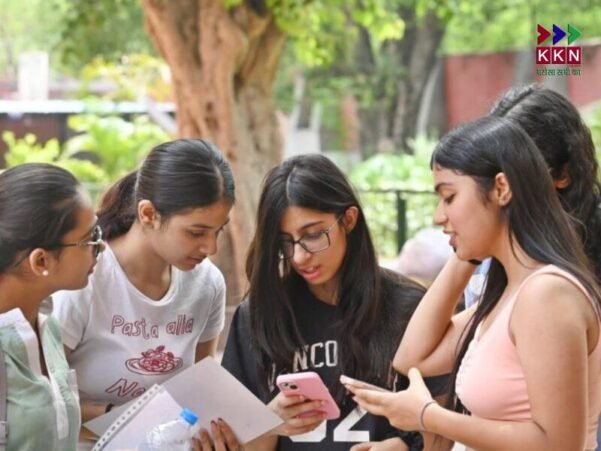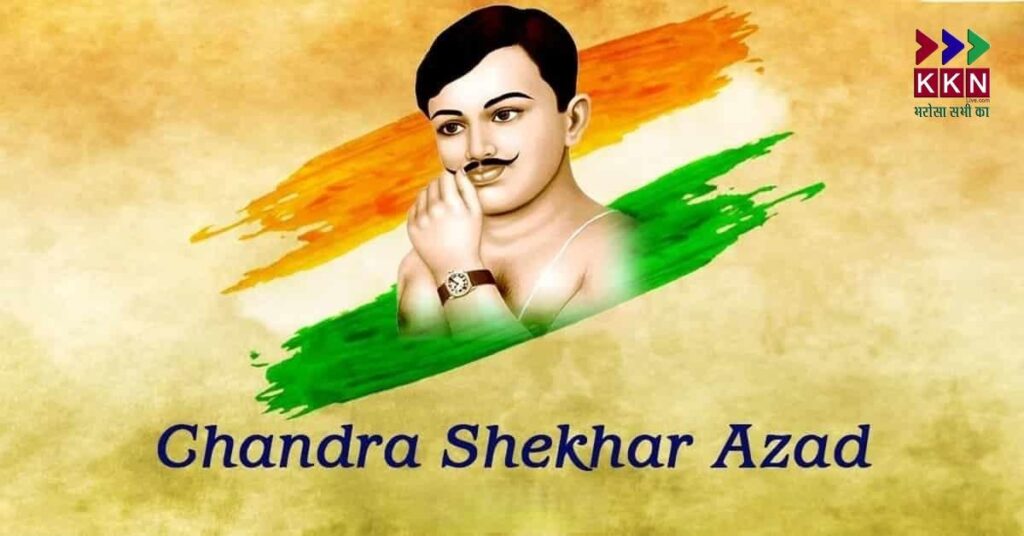
Chhoti Diwali, also known as Narak Chaturdashi, Roop Chaudas, or Kali Chaudas, marks the beginning of the grand five-day Diwali celebration in India. Falling on October 19, 2025, this auspicious day holds profound spiritual significance and is celebrated with unique rituals that cleanse the body, mind, and soul. This festival commemorates the victory of good over evil and serves as a powerful reminder of light’s triumph over darkness.
The Sacred Story Behind Chhoti Diwali
The celebration of Chhoti Diwali is rooted in ancient Hindu mythology, specifically the legendary battle between Lord Krishna and the demon king Narakasura. According to Hindu scriptures, Narakasura was a powerful demon who terrorized both heaven and earth, capturing 16,000 women and imprisoning them against their will. He also plundered divine treasures, including Lord Varuna’s umbrella, Mother Aditi’s earrings, and the celestial playground known as Mani-parvata.
When the gods, including Lord Indra, failed to defeat Narakasura, they sought help from Lord Krishna, an incarnation of Lord Vishnu. Krishna, accompanied by his consort Satyabhama (an incarnation of Bhudevi, Narakasura’s mother), engaged in a fierce battle with the demon. Narakasura had received a boon from Lord Brahma that no male could kill him, and only a woman would be the cause of his death. During the battle, when Krishna was slightly injured, an enraged Satyabhama shot the final arrow that killed Narakasura.
Before his death, Narakasura sought forgiveness and requested that his passing be celebrated with lights and joy rather than remembered with hatred. Lord Krishna granted this wish, which became the foundation for celebrating Narak Chaturdashi as a day of triumph. After the victory, Lord Krishna freed all 16,000 captive women and later married them to protect them from societal condemnation. According to tradition, Lord Krishna then took an oil bath to cleanse himself of the demon’s blood, which became the origin of the ritual Abhyanga Snan.
Spiritual Significance and Symbolism
Narak Chaturdashi represents far more than a mythological victory—it symbolizes the spiritual cleansing of negativity, anger, ego, and ignorance from one’s life. The festival encourages introspection and purification, preparing devotees to welcome divine blessings during the main Diwali celebration.
The day is also significant for worshipping Lord Yama, the god of death, and seeking protection from untimely demise. In West Bengal and eastern India, the festival is known as Bhoot Chaturdashi, where families light 14 diyas to honor ancestors and guide their spirits, creating a connection between generations through light and memory.
Auspicious Timing for Chhoti Diwali 2025
According to the Hindu Panchang, the Chaturdashi Tithi begins at 1:51 PM on October 19, 2025, and ends at 3:44 PM on October 20, 2025. The most auspicious time for performing rituals includes:
Abhyanga Snan Muhurat: 5:12 AM to 6:25 AM on October 20, 2025
Brahma Muhurta: 4:44 AM to 5:34 AM
Evening Puja Muhurat: 5:47 PM to 9:00 PM on October 19, 2025
The Sacred Abhyanga Snan Ritual
The most important ritual of Narak Chaturdashi is Abhyanga Snan, a purifying oil bath performed before sunrise during Brahma Muhurta. This ancient Ayurvedic practice is believed to cleanse accumulated sins and negative energies from the year.
How to Perform Abhyanga Snan:
Wake up during Brahma Muhurta (approximately 4:00-6:00 AM)
Prepare a special mixture called ubtan using sesame or mustard oil, gram flour (besan), turmeric powder, and fragrant herbs
Massage the ubtan gently onto your entire body for 10-15 minutes
Bathe with warm water while chanting the mantra: “Om Namo Bhagavate Vasudevaya”
This ritual symbolizes washing away physical and spiritual impurities. According to Ayurvedic principles, regular oil application delays aging, alleviates physical and eye strain, soothes Vata dosha, promotes restful sleep, and enhances the skin’s natural glow. The Abhyanga Snan specifically performed on Narak Chaturdashi is believed to prevent one from experiencing the sufferings of hell.
Complete Chhoti Diwali Puja Vidhi (Ritual Procedure)
Morning Rituals
After completing the Abhyanga Snan, wear fresh, clean clothes, preferably in auspicious colors like yellow, orange, or red.
Clean your home thoroughly, especially the south direction of the house, which is associated with Lord Yama.
Sprinkle Ganga jal (holy water) throughout your home for purification.
Essential Puja Items (Samagri)
To perform the complete puja, you will need:
Sesame or mustard oil
Earthen diyas (clay lamps)
Cotton wicks
Fresh flowers (especially red flowers for Lord Krishna)
Incense sticks and camphor
Turmeric powder and kumkum (vermillion)
Raw rice (akshata)
Fruits and sweets
Betel leaves and supari (areca nuts)
A kalash (sacred pot) with mango leaves
Red cloth
Sacred thread (kalava/moli)
Havan materials (if performing homa)
Evening Puja Procedure
Setup the Altar: Clean the puja area in the northeast corner of your home. Create a beautiful rangoli design at the place where you will perform the worship. Place a low wooden platform (chowki) and light one diya at each of its four corners.
Install the Deities: On a bed of raw rice, install idols or pictures of Lord Ganesha, Goddess Lakshmi, Lord Krishna, Lord Kubera, and Goddess Saraswati. Lord Vishnu should be placed on the left side of Goddess Lakshmi.
Ganesh Puja: Begin by worshipping Lord Ganesha to remove obstacles. Hold flowers in your hand and meditate on Ganesha with the mantra: “Gajaananam Bhuta Ganaadi Sevitam Kapittha Jambu Phalaacharu Bhakshanam | Umaasutam Shoka Vinaashakaarakam Namaami Vighnesvara Paada Pankajam”
Invoke Ganesha with: “Om Gam Ganapataye Ihagaccha Iha Tishtha”
Offer water for washing feet (padya), offering hands (arghya), bathing (snan), and drinking (achamana) with the mantra: “Om Gam Ganapataye Namah”
Apply red sandalwood paste and sindoor (vermillion) to Ganesha.
Krishna Puja: Since Narak Chaturdashi celebrates Lord Krishna’s victory, worship Him by chanting: “Om Krishnaya Namaha” (108 times)
Offer red flowers, fresh fruits, and traditional sweets to Lord Krishna.
Lakshmi Puja: Worship Goddess Lakshmi by performing her anga puja (worship of different body parts) while offering akshata (rice grains). Chant the following mantras:
“Om Chapalayai Namah Padau Pujayami” (I worship your feet)
“Om Kamalavasyai Namah Bhujau Pujayami” (I worship your arms)
“Om Shriyai Namah Shirah Pujayami” (I worship your head)
Kubera and Kali Puja: In some regions, devotees also worship Lord Kubera (god of wealth) and Goddess Kali for protection from evil energies and black magic.
The Sacred Yama Deepa Ritual
One of the most significant rituals of Chhoti Diwali is lighting the Yama Deepa—a special lamp dedicated to Lord Yama, the god of death.
How to Perform Yama Deepa:
Make a large earthen lamp from wheat flour or use a traditional clay diya.
Prepare four wicks and place them in the lamp to create a four-faced diya (chaumukhi diya).
Fill the lamp with sesame or mustard oil.
Sprinkle Ganga jal around the lamp.
Place some grains beneath the lamp.
Light the lamp facing the south direction (the direction of Lord Yama) at your home’s main entrance during Pradosh Kaal (sunset time).
Stand facing south, join your hands in prayer, and seek Lord Yama’s blessings for protection from untimely death and for long life for your family.
This ritual is believed to bring the blessings of ancestors, ensure household peace and prosperity, and protect the family from fear of death.
Lighting the 14 Diyas
According to tradition, 14 diyas should be lit on Chhoti Diwali, representing the 14 realms of existence in Hindu cosmology. These lamps honor Lord Yamraj and invite peace, longevity, and spiritual cleansing into homes.
Placement of the 14 Diyas:
1 at the main entrance (welcoming divine energy)
4 in the corners of the house (guarding the space)
1 in the kitchen (for abundance)
1 in the puja area (for divine blessings)
6 outdoors around the home (to dispel negativity)
1 special Yama Deepa facing south
A common tradition involves placing 11 diyas around a plate with one four-faced central diya that should be lit first. Some families also add sugar or sweets to the diyas, symbolizing sweetness and harmony in life.
Concluding the Puja
Offer naivedya (food offerings) including kheer, puri, seasonal fruits, and traditional sweets to the deities.
Perform aarti with camphor while singing devotional songs.
Offer betel leaves and areca nuts: “Idam Tambula Pugi Phala Samayuktam Om Krishnaya Namah”
Recite or listen to stories of Narakasura’s defeat from the Bhagavata Purana.
Distribute prasad among all family members.
Special Mantras for Chhoti Diwali
Purification Mantra:
“Om Apavitrah Pavitro Va Sarvavastham Gato’pi Va | Yah Smaret Pundarikaksham Sa Bahyabhyantarah Shuchih”
(Sprinkle water on yourself and puja materials while chanting this)
Lord Yama’s 14 Names for Water Offering:
Recite these names three times while offering water:
Om Yamaya Namah | Om Dharmarajaya Namah | Om Mrityave Namah | Om Antakaya Namah | Om Vaivasvataya Namah | Om Kalaya Namah | Om Sarvabhutakshayaya Namah | Om Audumbaraya Namah | Om Dadhnaya Namah | Om Nilaya Namah | Om Parameshthine Namah | Om Vrikodaraya Namah | Om Chitraya Namah | Om Chitraguptaya Namah
Traditional Foods and Prasad for Chhoti Diwali
No festival is complete without delicious traditional foods. Chhoti Diwali features an array of sweets and savories.
Regional Variations Across India
Chhoti Diwali is celebrated differently across various regions of India:
North India: The day is also observed as Hanuman Jayanti, with devotees offering rice, jaggery, sesame, and coconuts to Lord Hanuman.
South India: Narak Chaturdashi is celebrated as the main Diwali, with the oil bath ritual being particularly important. Traditional dishes are prepared using freshly harvested rice.
West Bengal: Known as Bhoot Chaturdashi, families light 14 diyas to honor ancestors. They also eat 14 different leafy greens (choudosh shaak) for good health and spiritual balance.
Tamil Nadu: Devotees observe Nombu fasting and worship Goddess Lakshmi for prosperity.
Western India: Diyas are lit at the main entrance to symbolize freedom from worldly suffering.
Spiritual Benefits of Observing Chhoti Diwali
Performing the rituals of Narak Chaturdashi with devotion brings numerous benefits:
Spiritual Protection: Creates a protective shield against negative energies, evil eye, and black magic.
Health Improvement: The ritualistic oil bath promotes physical well-being and removes toxins.
Financial Prosperity: Lighting lamps attracts Goddess Lakshmi’s blessings for wealth and abundance.
Astrological Remedies: Worshipping Goddess Kali on this day pacifies the malefic effects of planets Rahu and Saturn.
Family Harmony: The collective celebration strengthens family bonds and creates positive household energy.
Long Life: Worshipping Lord Yama ensures protection from untimely death and grants longevity.
According to traditional beliefs, those who observe Narak Chaturdashi with devotion can experience significant improvement in overcoming obstacles related to zodiac afflictions.
Chhoti Diwali serves as a spiritually significant precursor to the main Diwali celebration, reminding us that before inviting prosperity and light into our lives, we must first drive away the darkness within. The rituals of Abhyanga Snan, Yama Deepa, and the lighting of 14 diyas are not merely symbolic traditions—they are powerful practices for purification, protection, and renewal.
This festival beautifully combines mythology, spirituality, and family traditions, creating a day of introspection, gratitude, and connection with the divine. Whether you celebrate through elaborate pujas or simple lamp lighting, the essence of Chhoti Diwali lies in cleansing negativity, honoring ancestors, and preparing your heart and home to receive the blessings of light, prosperity, and joy.
As you light your diyas this Chhoti Diwali, may the sacred flames illuminate your path, dispel all darkness from your life, and fill your home with divine blessings and eternal happiness. Happy Chhoti Diwali!


